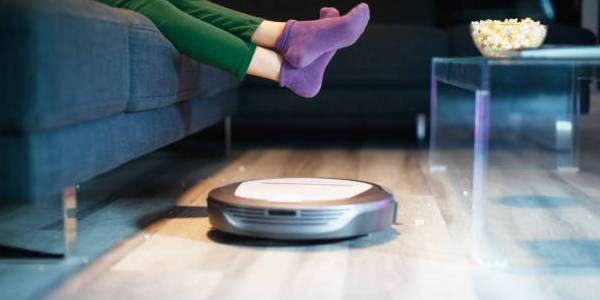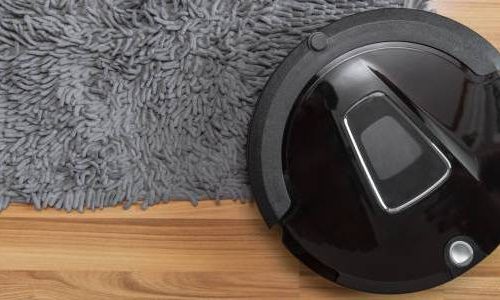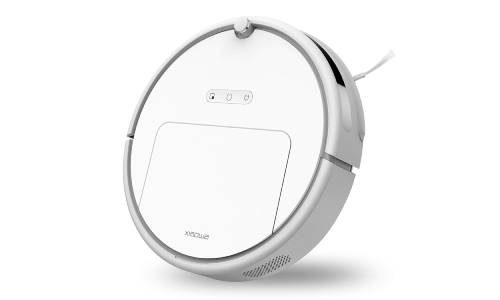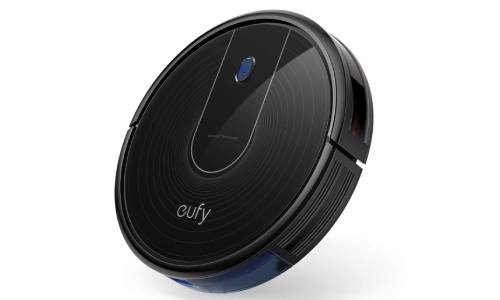Robotic vacuum cleaners are handy little machines that can make cleaning your floors a lot easier and, if you have a cat, provide hours of entertainment as you watch Captain Fuzzy Boots ride around on it and bump into walls. While they are obviously a tremendous amount of help in maintaining some level of tidiness in your home, do you know how they actually work? Have you ever thought about what exactly happens when you switch on your robotic cleaning minion? While the specifics vary from model to model due to the features that the different types possess, most robotic vacuum cleaners function in the same basic way.
Ever since man first envisioned a life filled with robotics, there has been the thought of using them to assist in daily activities. The first, and most famous, robotic vacuum cleaner was the Roomba from iRobot. People were amazed by the notion of a small little robot whizzing about and keeping the floors tidy. However, the more we advance technologically, the more the robotic vacuum cleaner continues to evolve. It is not beyond reason to think that they one day be a standard feature everywhere.
How do robotic vacuum cleaners work?
Depending on which model you purchase, some of the finer details may be slightly different, but for the most part, they are designed to be small motorized machines that navigate using sensors or a pre-programmed pattern of movement. They will vacuum up as the move along or only when they detect a need for it. Alarm or notification bells will often alert users that their compartment for debris is full and needs to be emptied before they can continue to their task. They either run on a set of rechargeable internal batteries or disposable ones.
How are they most helpful?
Robotic vacuum cleaners work well on all types of floor with the right model, and can patrol areas to maintain a dust, dander, and hair free floor. For pet owners and those with allergies they can be extremely helpful in reduce the concentration of allergens. Those with raised up furniture and small crawl spaced beneath counters and the like also find them very useful. They often can fit into these difficult to reach places to save from having unhealthy accumulations in areas you cannot normally access with regular sweeping or vacuuming.
Are there any downsides to using a robotic vacuum cleaner?
They do require re-charging or replacing the batteries periodically, so they cannot simply be left unattended forever. When they are on a route you should be mindful of the area to avoid absently stepping on it and tripping up or damaging it. For the most part though, there are very few imaginable downsides, if any. Even the cost for them has dropped significantly over the past few years.
What is the average cost for a good one?
At most, even the highest recommended and rated models are not over $400. Models in this price range come with a minimal number of high end features. They can traverse any flooring, are fully programmable, and have a 2-4 hour operation time between recharge cycles. While it may seem peculiar to have such a short operation time, it does not often take that long to vacuum a room and using them with specific programs to run an sweep through periodically will allow it to be used quite a while before requiring a recharge.
The biggest selling point for robotic vacuum cleaners is convenience.
Even if they may still be beyond what some consider to be the average households budget for simple household cleaning equipment, they are rapidly developing and may one day truly replace having a traditional vacuum cleaner and free up more time for other activities than focusing on that household chore.
Other Things to Know
The majority of robotic vacuum cleaner models are circular in shape and are usually about twelve inches in diameter. It sits on top of two driver wheels and at least one caster wheel, which are used to move the vacuum cleaner around the house. The underside contains different sensors (the number, quality, and function of the sensors will depend on the model you purchase and, quite honestly, the amount of money you are willing to pay), which are responsible for detecting changes in elevation (stairs), locating dirt and debris present on the floor, and knowing the distance it has traveled, among other things.
The mechanism by which it suctions dirt from the floor into the dustbin is much like that in a regular vacuum cleaner: a motor contained inside the vacuum generates suction when it is turned on, then, as it rolls about the house, other motors rotate the vacuum’s brushes to sweep dirt and miscellaneous material into the path of the suction, which captures the dirt and deposits it into the cleaner’s attached dustbin.
While some robotic vacuum cleaners may be very smart, they do not (obviously) have a human’s ability to sense when there are objects on the floor that should not be vacuumed. For this reason, when you are using a robotic vacuum cleaner, it is imperative that you pick up toys, especially those with small pieces, like Legos, and other items that could potentially be picked up by the vacuum and cause it to malfunction.
Most robotic vacuum cleaner models have the ability to navigate around your house based on an option you select (there are usually four or five choices). Some common movement patterns include circling or spiraling, criss-crossing, and zigzagging. While it is not a universal features, there are robotic vacuum cleaners that come with virtual walls.
This is a device that emits an infrared light beam; when the vacuum cleaner senses the light beam, it changes its course to avoid passing into the area marked by the beam.
For those who want to take their robotic cleaning to the highest tech level, there are lighthouses, which are similar to virtual walls in that they emit a light to signal the cleaning unit, but they also use radio frequency to communicate with the vacuum cleaner and help it clean more effectively and efficiently. The vacuum will then set about its task, rolling about the house until it determines that its job is complete or until it runs out of battery. At the conclusion of its cleaning cycle, the robotic vacuum cleaner will then return to its docking station and recharge—all without you having to lift a finger.






